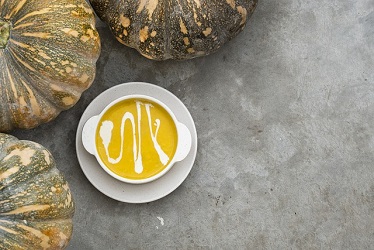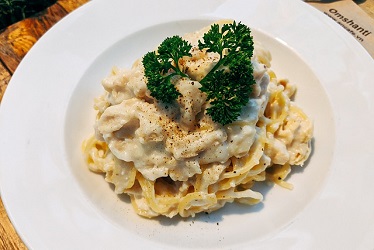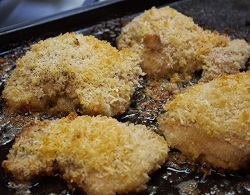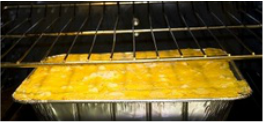I love chicken piccata but often have issues with versions available. So let me explain how I tweaked the recipe. The combination of lemon, butter, garlic and capers with sauteed boneless chicken breasts is classic for a reason. But if you take a look at even a few recipes out there you’ll find that there are significant variations, and they can’t all be the best! So I’ve gone on a CP deep dive and combined aspects into what I think make a perfect version. Issues I’ve addressed involve:
1. Not enough sauce—This problem is of course easily solved simply by increasing amounts.
2. Not using wine—It’s surprising that many recipes don’t include this fabulously flavorful ingredient. Chicken stock alone doesn’t give the sauce the complexity it needs. I’ve included wine measuring half the amount of chicken stock called for.
3. Depending solely on the emulsifying properties of butter to thicken the sauce and add creaminess. I have never succeeded in making a butter emulsion, so I just don’t do it. Many recipes that call for only butter as a thickener end up being very thin anyway, so it’s not just me. The sauce can also be way too tart and astringent. I have run into several CP recipes that call for heavy cream, though, a heretical addition but one that makes perfect sense. So I’ve added that, along with some flour, either regular or GF. Purists will object, but so what? This is my recipe. The cream also smooths out the lemon flavor just a bit.
4. Including pieces/slices of whole lemon, including the pith: This is a real head-scratcher to me. Often lemon slices are just added as a garnish, and an inedible one at that. But the America’s Test Kitchen version claimed that cooking the whole slices in the sauce (or, as other recipes have you do, sauteing the slices in the pan drippings) mellows out the pith’s flavor and adds a complex, even “floral,” note. So I went ahead and did it this way as an experiment, and we all gamely ate it, but in the end we had to admit that it was just TOO MUCH. The bitterness of the pith came through the more we chewed. So I have you take a couple of extra minutes to use a microplane grater to zest the lemon. You can also peel it off in strips and julienne it, but really the fine shreds are better and easier. Then you need to get the pith and membranes off the lemon flesh. Take a paring knife and slice off the pith, then quarter the pithed lemon and slice that inner center white strip off. The seeds should also get taken out with that strip; look for any left over and flick them out. You’ll still have some membranes left in the body of the lemon, so you can leave them as is or slice off the flesh between them. That little bit of membrane isn’t a big deal as far as I’m concerned. Slice the flesh crosswise. Take a few extra minutes to prep the lemon my way and you’ll get the flavor from the zest and from the lemon flesh without the bitterness and chewiness of the pith and membrane. To be fair here, sometimes lemons have a thinner pith that isn’t as intrusive, and some comments on various recipes have mentioned using Meyer lemons, which apparently have less bitterness. So if you’re sure about your lemons, maybe you can go ahead and use the whole thing. But for us schlubs who just buy the regular old supermarket lemons, the remove-the-pith-and-membranes step makes a huge difference.
5. Not dredging the chicken with flour, or going overboard and doing the whole flouring/egging/crumbing business. The great Sara Moulton says that you should always coat delicate foods (fish especially but also chicken) with flour before pan frying, and I think she’s right. It really has nothing to do with developing a crispy coating but instead with protecting the meat from drying out and enhancing browning. That slight amount of flour can also thicken the sauce a bit more, at least in theory. There’s absolutely no need to go to the other extreme and basically make the kind of breaded chicken that you’d have in chicken Parmesan or schnitzel. Since the chicken here is meant to be put back into the sauce, all that nice crispness is going to be lost anyway, and you’ve have done a lot of extra work for nothing. Just count that time saved here against the time you use prepping the lemon the way I say to do. It’ll come out even, I think!
So that’s how I re-did this recipe, and I have to say that my family loved it. That little added zing from the zest and the lemon flesh made for an extra layer of flavor without the bitterness and chewiness that had been such a problem. When I was asked to make lunch for a women’s meeting at my church, therefore, I thought of doing this. It’s just unusual enough that I thought it would intrigue people without scaring them off. After carefully thinking through how to adapt this dish for a crowd I followed my own directions, and my word! Did people ever vacuum this up! I got more compliments than I can document here; the biggest one was from a woman who typically eats vegetarian and but who, I guess, heard the exclamations of delight around her and decided to take a chance. I was so chuffed!
Here’s my only-a-little-bit-more-work-but-totally-worth-it version, with directions for making a big batch included at the bottom:
The Best Chicken Piccata with Lemon/Wine/Butter Sauce
- 2 large boneless skinless chicken breasts
- Salt to taste
- Pepper to taste
- Flour (for dredging)—you can use regular or GF flour—plus 2 tablespoons for the sauce
- 4 tablespoons butter (clarified butter works well here), more if needed
- 2 tablespoons olive oil, more if needed
- 1 shallot, finely minced
- 1 lemon, zested, pith and seeds removed, flesh sliced thinly, any truly obnoxious membranes removed
- 1-2 garlic cloves (depending on size of cloves and how much you like garlic), pressed, grated or minced
- 1 cup chicken broth (I use 1 cup water + a generous tablespoon of Better than Bouillon)
- ½ cup dry white wine
- Pinch of red chile flakes
- 3 tablespoons lemon juice
- 2 tablespoon drained capers
- 1/2 cup heavy/whipping cream
- Finely chopped parsley
Directions:
1. Slice chicken breasts into roughly-equal but smallish pieces. Chicken breasts vary enormously in size, so there’s no one-size-fits-all technique. Don’t try to slice the whole thing horizontally, though—that way lies madness, and you end up with an extremely thin tail to the breast. Trim off any fat and those gross white tendons—anything that doesn’t look edible. Put the chicken pieces between two pieces of plastic wrap and pound to about ½” thickness. You can use a rolling pin, an actual meat pounder, or even a small skillet. The point of this step is to get the chicken pieces to an equal thickness, not to get them super thin. (See below for a video clip from America’s Test Kitchen demonstrating a technique that works well with somewhat-standard-sized breasts. You can adjust for very large or very small ones.) Peel off the top piece of plastic wrap and season chicken generously with salt on both sides, then let it sit at room temp for 15 minutes, which will help aid juiciness. (You’re basically doing a quick dry brine.) Sprinkle with pepper and coat the chicken in flour, shaking off excess. Leave the chicken on the plastic wrap and just sprinkle the flour over the top and flip it around a bit until it’s coated. You don’t have to dirty up a plate for the flour if you do it this way. Then when you’re done with the chicken pieces for this step you just gather up the plastic wrap and throw it away, getting rid of salmonella and sticky flour all at once.
2. Add 2 tablespoons of the butter plus 1 tablespoon of the olive oil to a skillet over medium to medium-high heat. Your best bet here is a stainless steel, non-nonstick, so that you get some nice fond from browning the chicken. A nonstick pan will work fine if that’s all you have, but then the fond will stick to the chicken, not the pan, and the dark surface makes it harder to see how dark any fond or drippings are getting.
3. Once the pan is hot, cook the chicken pieces for 2-3 minutes per side until golden. Depending on how big your pan is, you’ll probably need to do a couple of batches, and you’ll almost certainly need to add the rest of the oil/butter. Try not to burn the fond! If you see that things are getting too dark, scrape out the pan’s contents into something and save it. Those brown bits and chicken-y fat are pure gold, so don’t do what some recipes say to do and wipe out the pan with a paper towel. That’s cooking malpractice! (Ina Garten commits this particular sin in her CP recipe.)
4. Remove the chicken from the skillet and set aside. You can put it on a baking sheet and into a warm oven if you’d like, but you’re going to reheat it in the sauce at the end anyway, so you don’t have to do this step.
5. Lower the heat and add shallot, cooking until softened, then add the lemon flesh and zest, stirring it around until it caramelizes slightly. Add in the garlic and any fond you scraped out from step #3 above. Sprinkle flour over and stir until it bubbles, then add the wine and simmer till reduced, being sure to scrape up all brown bits in the pan. Add the pepper flakes, chicken broth and lemon juice, then bring back to a simmer. Whisk in the cream and capers. Keep the heat low enough so that the sauce is at a very gentle simmer—too much heat will cause it to break. (If it does, it’ll still taste good—it just won’t look as pretty or be as creamy.)
6. Add the chicken back into the pan to reheat, turning it over in the sauce to coat.
7. I’d just serve this from the pan—that’s not the most elegant, but everything stays hot that way. Garnish with freshly chopped parsley to add an elegant touch! I’d go with pasta and some kind of green vegetable to round out the meal—asparagus would be ideal, if it’s available. This recipe should serve 3-4, depending on size of sides and people.
FOR A BIG CROWD:
You’re going to have to make the sauce ahead of time and then sauté the chicken on the spot, sauce it, and finish cooking it in the oven. You don’t want to make this whole thing at the time of your event, as that’s a sure road to a nervous breakdown. Yes, you do lose the fond somewhat, but you can do the best you can.
So go ahead and make the sauce as directed above, starting from Step #5 above and using half of the fat. If I’m making this for a crowd I’ll do a double batch per each half-size disposable aluminum pan that fits into half of a standard chafing dish. If you do this, then you’ll have 8-10 servings per pan and therefore 16-20 servings per chafing dish. (How many servings you get is dependent on two things: how big your chicken breasts are and how many other items you’re serving. Shoot for about 4 ounces per serving of chicken, more or less, but don’t drive yourself too crazy.)
Divide the sauce into your pans and cover with foil; you can then refrigerate them until you’re ready to start cooking. Also trim/pound your chicken breasts. I’d put them in layers separated by plastic wrap on a sheet pan. You can do this the night before if you’d like; slide them into the fridge. An hour-hour and a half before your event, stick the pans with sauce into a 3250 oven and let the sauce reheat. Sprinkle your chicken with salt and let sit for 10-15 minutes, then sprinkle with flour (regular or GF, remember) and flip around. Saute the chicken until almost done. I use my big electric griddle and cook probably two pans’ worth at a time. Place the chicken into the pans, scraping any fond available over the top. Re-cover with aluminum foil and bake for maybe 15 minutes, just until done. (Use a dependable instant-read thermometer to make sure the meat is at 1600.) Take off the foil and sprinkle with parsley, transfer to the chafing dishes, and stand back as the ravening hordes descend.
Here’s that great America’s Test Kitchen technique for making chicken cutlets from boneless breasts:
https://youtube.com/clip/UgkxxS4bGjOYL87YnpUs4PRWeG90kTFIUxIz



 I tried out this recipe when we had a bad snowstorm and I had to make do with what I had on hand, including some boneless chicken thighs. I will say again: stop buying boneless chicken breasts and buy these instead. They are so much better and cost so much less. They are every bit as good as white meat and they don’t dry out. If you think your family won’t eat them, just serve them up and don’t say anything. I can (almost) guarantee that no one will know the difference except to say, ‘Hey Mom/Honey, these are really great!”
I tried out this recipe when we had a bad snowstorm and I had to make do with what I had on hand, including some boneless chicken thighs. I will say again: stop buying boneless chicken breasts and buy these instead. They are so much better and cost so much less. They are every bit as good as white meat and they don’t dry out. If you think your family won’t eat them, just serve them up and don’t say anything. I can (almost) guarantee that no one will know the difference except to say, ‘Hey Mom/Honey, these are really great!”
